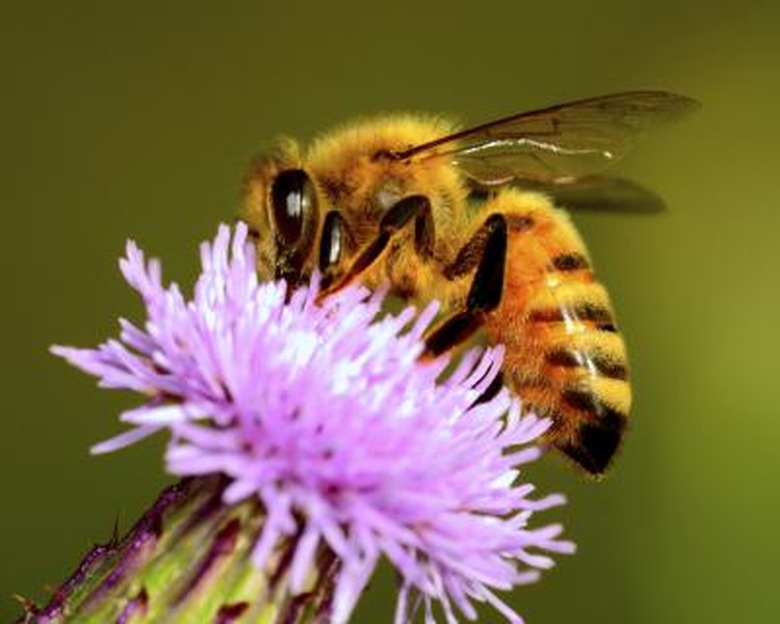Honey Bee Information For Kids
The honey bee, also known as the European honey bee or the Western honey bee, lives in many countries around the world. Kids with an interest in honey bees can learn about their roles, behavior and reproductive patterns. As a natural pollinator for flowers, fruits and vegetables, the honey bee plays an important role in agriculture.
TL;DR (Too Long; Didn't Read)
Honey bees are very sociable, living in large groups, known as colonies. Each type of honey bee, such as a queen bee, drone and worker bee, has a different role within the colony.
Honey Bees Are Smart and Efficient
Honey Bees Are Smart and Efficient
Of all the facts about bees, the most well-known one is probably that they produce honey. This creates the food stores their colony needs to survive the winter. However, bees produce a lot more honey than they need, and the surplus ends up in jars on your supermarket shelves for you to enjoy. Honey bees are very fast insects, flying at a speed of about 25 km per hour and beating their wings about 200 times per second. Honey bees also have a great sense of smell, which they use to differentiate between types of flowers when foraging for food, and to communicate within the colony.
The Queen Bee Is Most Important
The Queen Bee Is Most Important
The queen bee is the only fertile bee, and she lays hundreds of eggs per day and over 2,500 eggs per day at the height of summer. The queen bee, who can live for up to five years, also produces chemicals that influence the behavior of other bees. For example, she can stop worker bees from producing eggs.
Male Bees Fertilize the Queen
Male Bees Fertilize the Queen
Male bees, which don't have stingers, are drones. Their only role is to mate with the queen bee. In fact, as soon as a drone fertilizes the queen bee, he dies. Hundreds of drones live in each hive during spring and summer, but when the hive goes into winter survival mode, worker bees drive them out.
Worker Bees Have Short, Busy Lives
Worker Bees Have Short, Busy Lives
Worker or female bees do whatever is necessary to keep the hive operating smoothly, such as bringing food like pollen and nectar from flowers to the queen bee, protecting the hive from predators and cleaning the air inside the hive by beating their wings. A worker bee only lives for about five to six weeks, during which time she produces about a twelfth of a teaspoon of honey.
If the queen bee dies, workers raise a new queen. They choose a young larva or newly hatched baby insect and feed it a special food called "royal jelly," which helps it grow into a fertile queen bee.
Bees Don't Hibernate
Bees Don't Hibernate
Honey bees don't hibernate in winter. They gather together and beat their wings to keep warm, eating the honey the collected during the summer. On warm winter days, they may remove any dead bees from the hive. Cleanliness is important to bees.
Cite This Article
MLA
Gillespie, Claire. "Honey Bee Information For Kids" sciencing.com, https://www.sciencing.com/honey-bee-information-kids-5883716/. 22 November 2019.
APA
Gillespie, Claire. (2019, November 22). Honey Bee Information For Kids. sciencing.com. Retrieved from https://www.sciencing.com/honey-bee-information-kids-5883716/
Chicago
Gillespie, Claire. Honey Bee Information For Kids last modified March 24, 2022. https://www.sciencing.com/honey-bee-information-kids-5883716/
